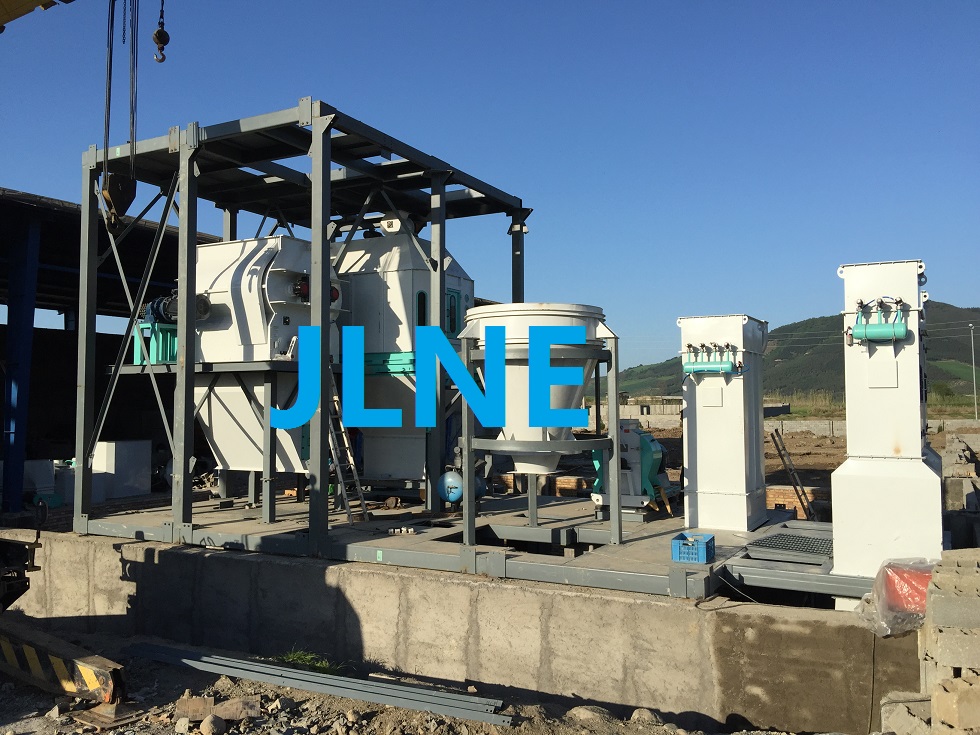
How to reduce the production cost of feed pellet factory I
The cost of feed production and processing refers to the various production expenses incurred by the feed factory for the production of products or the provision of labor services, including various direct material expenses and manufacturing expenses. Direct material costs include raw material expenditures (which can be further divided into raw material consumption and raw material loss), transportation costs, woven bags, labels, and sewing threads. Manufacturing expenses refer to the various expenses incurred by the feed factory for the organization and management of production, including workshop staff wages, piece-rate wages, welfare fees, labor insurance fees, social insurance fees, depreciation fees, rental fees, environmental protection expenditures, power costs (electricity, Coal, diesel), maintenance and other manufacturing costs (Office expenses, travel expenses, reception expenses, daily necessities, etc.). The purpose of tapping the potential and reducing consumption of the feed factory is mainly to carry out scientific and reasonable cost control for the feed processing process after eliminating the cost of feed raw materials, so as to achieve the purpose of reducing the cost of the processing process and creating benefits for the enterprise.
1. electricity cost
Electricity is the largest part of the power cost of feed mills, and crushing is not only a necessary process in feed processing, but also one of the processes with the highest power consumption. The power consumption of the grinder accounts for about 40% of the total power consumption of the feed factory. The level of crushing efficiency directly affects the cost of power consumption. Crushing efficiency and the company's required raw materials, crushing particle size, performance of the crusher, adjustment of the hammer-screen gap (for example, using a 2.0mm screen, the hammer-screen gap is 10-13mm; the hammer-screen gap is adjusted according to the screen aperture) , Hammer wear, whether the pulverizer is running at full load, Shacron and the pulse dust removal effect have a lot to do with factors. The electrical and mechanical consumption of the pelletizer accounts for about 30% of the total power consumption of the feed mill. There are three key operating parameters for the pelletizer operation: steam supply, feeding speed, ring die and pressure roller gap. The two operating parameters of steam supply and feeding speed mainly depend on the moisture content and formula composition of the material to be granulated. If these two parameters are adjusted improperly, it is easy to block the machine, thereby reducing the production capacity of the granulator and increasing the power consumption per ton of the granulator. If the gap between the ring die and the press roller is too small, the ring die of the press roller will be easily worn out; if the gap is too large, the material between the press roller and the ring die will be too thick and unevenly distributed, causing the material to be squeezed out. Blocking phenomenon. In addition, the greater the compression ratio of the ring die, the higher the hardness of the particles, but the lower the output, the higher the electricity bill; the lower the ring die opening rate, the more likely it is to block the machine; the greater the wear of the pressure roller, the lower the output. The greater the wear of the ring die.
The main methods to reduce the power consumption of the feed pellet production factory are:
1. The production process is fully prepared and the connection arrangement is compact, reducing production preparation time and equipment idling, and avoiding waste of manpower, electricity, fuel, and time costs.
2. Organize production by using stepped electricity prices to reduce the cost of electricity for production. The electricity price during the peak period of electricity consumption is generally about 3 times that of the trough period. Since the electricity bill is in the low period at night, it is necessary to arrange the production of pellets in the evening shift as much as possible, and to reduce the phenomenon of blockage in the late shift pelletizer.
3. Minimize the variety and frequency of material transfer (if necessary, increase the inventory of finished products appropriately to reduce the frequency of material transfer).
4. In production, due to concerns about equipment blockage, the central control and granulator control the current of the grinder and granulator at 60%-70% of the rated current, or even lower, so that most of the feed mills are crushed. There are under-load and idling phenomena in equipment such as mills and granulators. The crushers, granulators and other equipment are not operated to full load, so the power consumption increases. This requires the personal supervision of the factory manager and assistants, and every time it is found, it must be timely Warn, if necessary, give appropriate assessments, rewards and penalties;
5. Reduce equipment downtime and maintenance time.
6. Using equipment and processes with different performances, the power consumption varies greatly. For example, when the soybean meal is finely pulverized, the power consumption of the wide multi-cavity pulverizer of the same power is reduced by more than 1/3 than that of the ordinary water drop type pulverizer. From the above analysis, it can be seen that waste of electricity is widespread in some feed mills (especially feed mills that are poorly managed), and there is a great potential for reducing power consumption in the production process.
